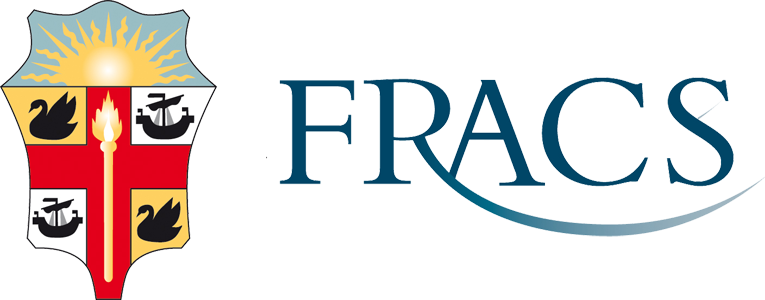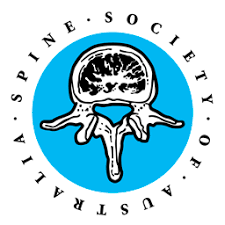Posterior Cervical Fusion
What is Posterior Cervical Fusion?
Posterior Cervical Fusion is a surgical procedure involving joining or "fusing" two or more vertebrae in the neck region known as the cervical spine. The term "posterior" denotes that the procedure is done from the back (posterior) side of the body.
The main purpose of the surgery is to stabilise the cervical spine and alleviate pressure on the spinal cord or nerve roots that can be caused by various conditions such as:
- Degenerative disc disease
- Fractures
- Spinal deformities
- Tumours
- Spinal stenosis
Who is Suitable for Posterior Cervical Fusion?
Posterior cervical fusion is generally considered for patients when non-surgical treatment options like physical therapy, medications, and injections are ineffective or when the condition is severe enough to cause significant pain, neurological symptoms, or spinal instability.
A thorough evaluation by a neurosurgeon is required to determine if someone is a suitable candidate for this procedure.
Benefits of Posterior Cervical Fusion
- Pain relief: One of the most common benefits of the procedure is a significant reduction in pain. This is especially true for individuals suffering from nerve compression, herniated discs, fractures, or cervical spine instability.
- Increased stability: Posterior cervical fusion surgery can stabilise the cervical spine, which is especially beneficial for conditions such as fractures, spinal deformities, or tumours.
- Prevents further damage: This procedure can prevent further damage and deterioration by stabilising the cervical spine and relieving pressure on the spinal cord and nerves.
- Improved function and quality of life: Once recovery from the procedure is complete, many patients experience improvement in their daily activities, mobility, and overall quality of life.
Types of Posterior Cervical Fusion
- Posterior Cervical Laminectomy and Fusion (PCF): This involves the removal of the lamina (part of the vertebrae protecting the spinal cord) and the fusion of two or more vertebrae in the cervical spine to stabilise it.
- Posterior Cervical Foraminotomy and Fusion (PCFF): In this procedure, the foramen (the opening where the nerve roots exit the spinal canal) is enlarged to alleviate nerve root compression, and fusion stabilises the spine.
- Posterior Cervical Decompression and Fusion (PCDF): This procedure involves removing bone spurs or disc material pressing on the spinal cord or nerve roots (decompression), followed by fusion to stabilise the spine.
Alternative Options to Posterior Cervical Fusion
- Non-surgical treatments
- Anterior Cervical Discectomy and Fusion (ACDF)
- Artificial Disc Replacement (ADR)
- Posterior Cervical Laminoplasty
- Minimally invasive spine surgery (MISS)
- Cervical Disc Arthroplasty
What to do Before a Posterior Cervical Fusion?
Tell Prof Malham about any medical conditions or previous operations. Suppose you have a medical condition such as diabetes, heart problems, high blood pressure or asthma. In that case, Prof Malham may arrange for a specialist physician to see you for a pre-operative assessment and medical care following the neurosurgery.
Inform Prof Malham of the medication you are taking and/or have allergies to medications. You must stop using the following ten days pre-operatively:
- Aspirin
- Plavix
- Isocover
- Asasantin
You must stop using blood thinning medication (such as Warfarin) 3-5 days pre-operatively.
Posterior Cervical Fusion Procedure
- Anaesthesia: The surgery begins with the administration of general anaesthesia, which means you'll be asleep and won't feel pain during the procedure.
- Positioning: You'll be positioned face-down on the operating table. The area of your neck where the surgery will be performed is cleaned and prepped.
- Incision: The surgeon makes an incision on the back of your neck to access your spine.
- Decompression: If necessary, the surgeon may perform a decompression, which involves removing portions of bone or disc material that are causing pressure on your spinal cord or nerve roots.
- Bone graft preparation: The surgeon prepares a bone graft, which may come from your own body (usually from the hip), from a bone bank, or be a synthetic material. This graft will help the vertebrae to fuse together.
- Fusion: The bone graft is placed between the vertebrae. Metal plates, screws, or rods may provide additional stability and help the vertebrae fuse together.
- Closure: The surgeon closes the incision with sutures or staples. A dressing is applied to protect the incision site.
- Recovery: You're taken to a recovery room, where healthcare providers will monitor your vital signs as you wake up from the anaesthesia.
What to Expect After a Posterior Cervical Fusion?
After surgery, you'll be in a recovery room where your vital signs (heart rate, blood pressure, oxygen levels) will be monitored. You may also have a neck collar to support and limit your neck movement.
Posterior Cervical Fusion Recovery Plan
- Activity and Rest: During the first few weeks, a balance of rest and gradually increasing activity is important. Walking is a good way to begin increasing your activity level.
- Physical Therapy: You'll likely start a physical therapy program to help regain strength and flexibility in your neck. The therapist will provide exercises you can do at home.
- Pain Management: Continue to take pain medications as directed by your doctor. As time passes, your pain should gradually decrease.
- Follow-up Visits: You'll have follow-up appointments with your surgeon to monitor your progress. This usually includes X-rays or other imaging tests to ensure the vertebrae are fusing correctly.
- Lifestyle Adjustments: Healthy habits can aid recovery. If you smoke, it's crucial to quit because smoking can interfere with bone healing. Proper nutrition also supports healing.
- Limitations: Avoid heavy lifting and strenuous activity for several weeks or until your surgeon says it's safe. Avoid any movements that cause pain or discomfort.
Posterior Cervical Fusion Prognosis
Many patients experience a significant reduction in pain and other symptoms and improved neck stability.
Most people can return to light activities within a few weeks to a few months, although complete bone healing and fusion may take several months or even a year. A successful fusion and a well-followed rehabilitation plan can result in a return to most normal activities.
Posterior Cervical Fusion Risks
As with any surgical procedure, there are potential risks associated with posterior cervical fusion. These include:
- Infection: Infections can occur at the surgery site or deep within the surgical area. Antibiotics are often given to prevent this.
- Bleeding: There's always a risk of bleeding during surgery. In rare cases, a blood transfusion may be required.
- Nerve damage: Although rare, there's a chance that nerves in the spinal cord could be damaged during surgery, leading to pain, weakness, or loss of sensation.
- Nonunion (Pseudarthrosis) occurs when the vertebrae do not fuse together as intended. This might require additional surgery.
- Difficulty swallowing or hoarseness: This is usually temporary and often improves within 1-3 months after surgery.
- Reaction to anaesthesia: Some people may have adverse reactions to general anaesthesia.
- Hardware fracture: Metal screws, rods or plates may move or break, causing pain and possibly requiring additional surgery.
Delaying Posterior Cervical Fusion
If your neurosurgeon recommends surgery, it is usually because your condition has progressed to a point where surgery is the most effective treatment option. Delaying the procedure could lead to worsening symptoms, increased pain, and further spinal cord or nerve damage.
However, every patient's situation is unique. If you're considering delaying surgery, discussing this with your neurosurgeon to understand the potential risks and benefits in the context of your specific condition and overall health is essential.



